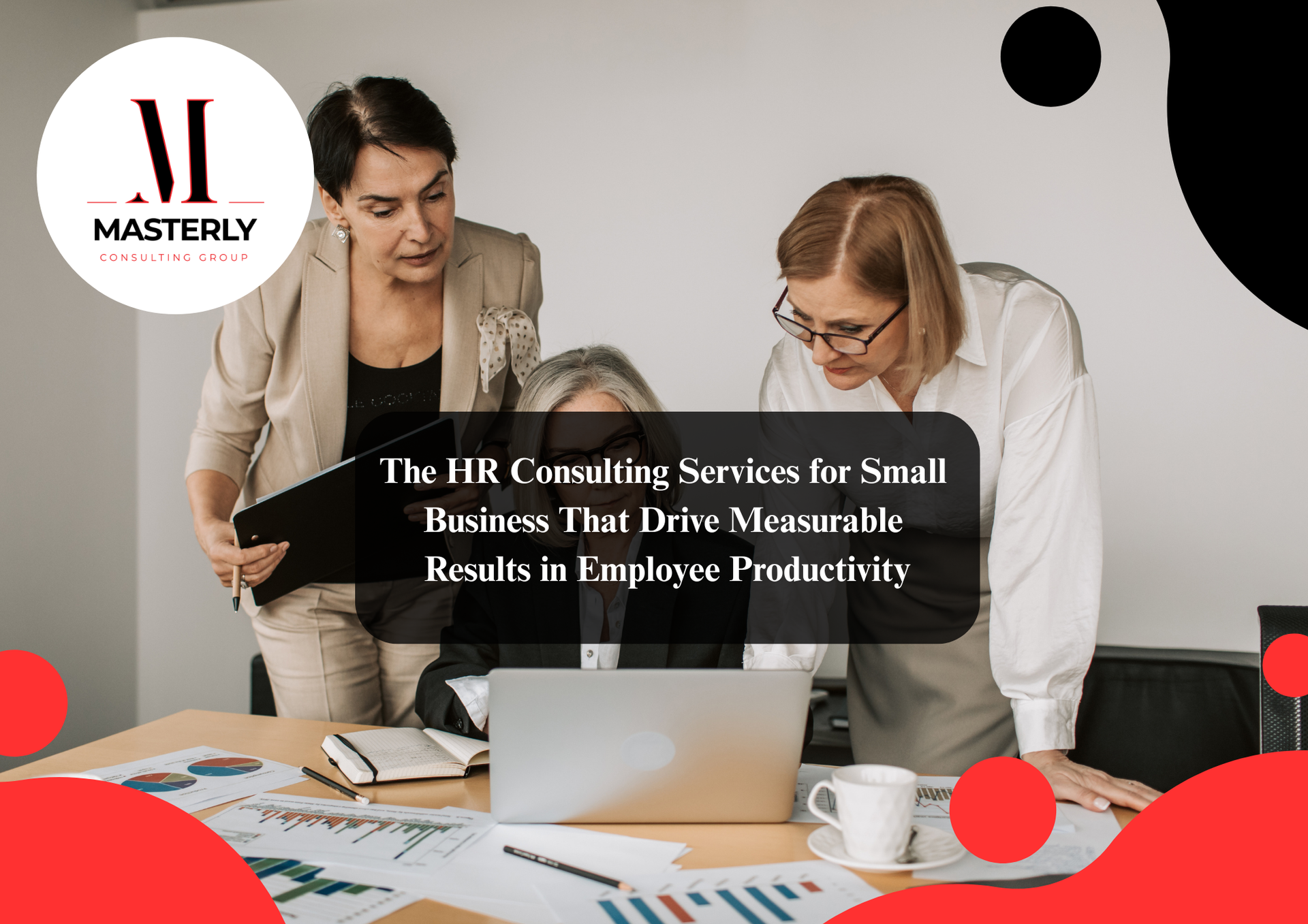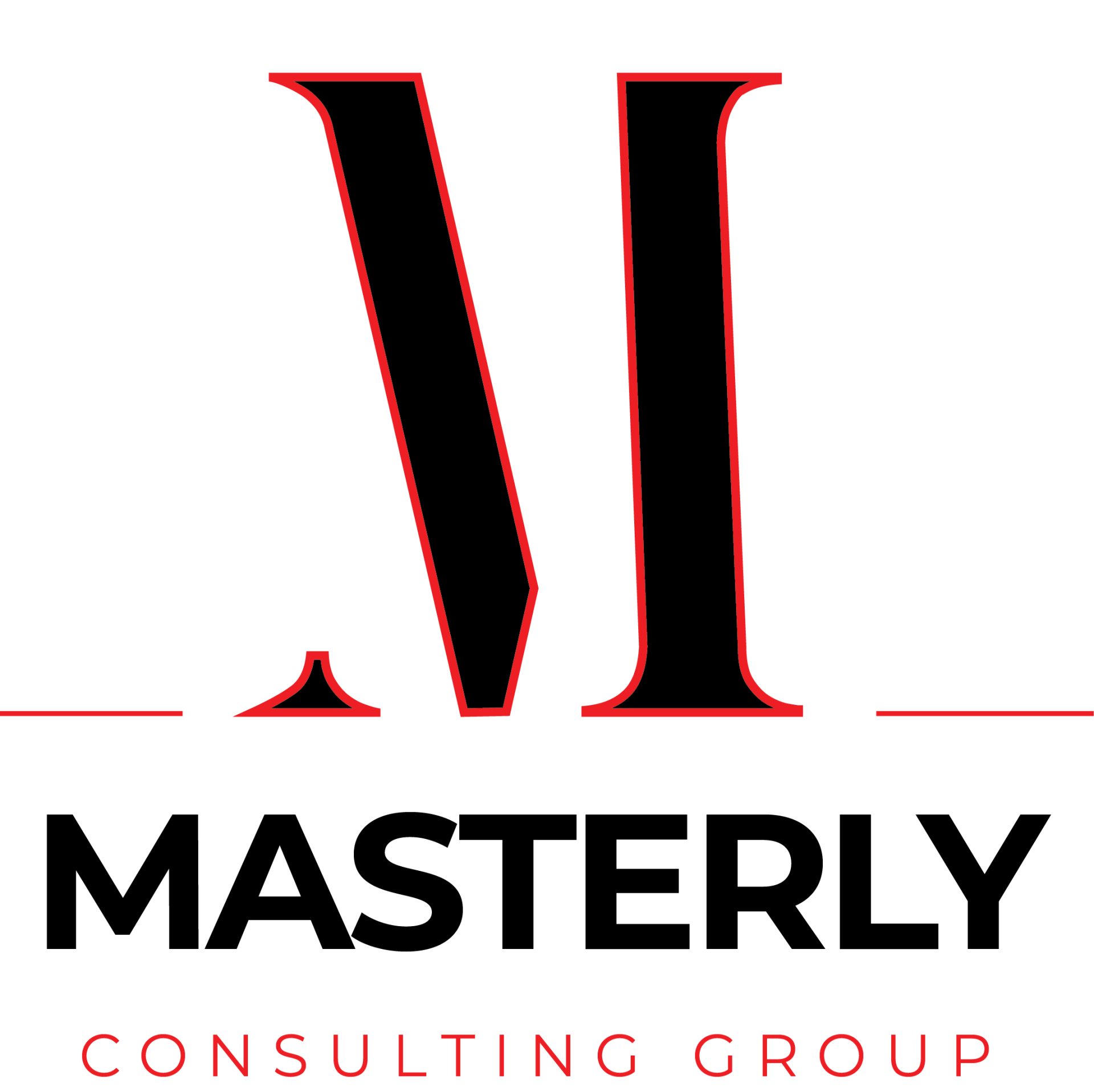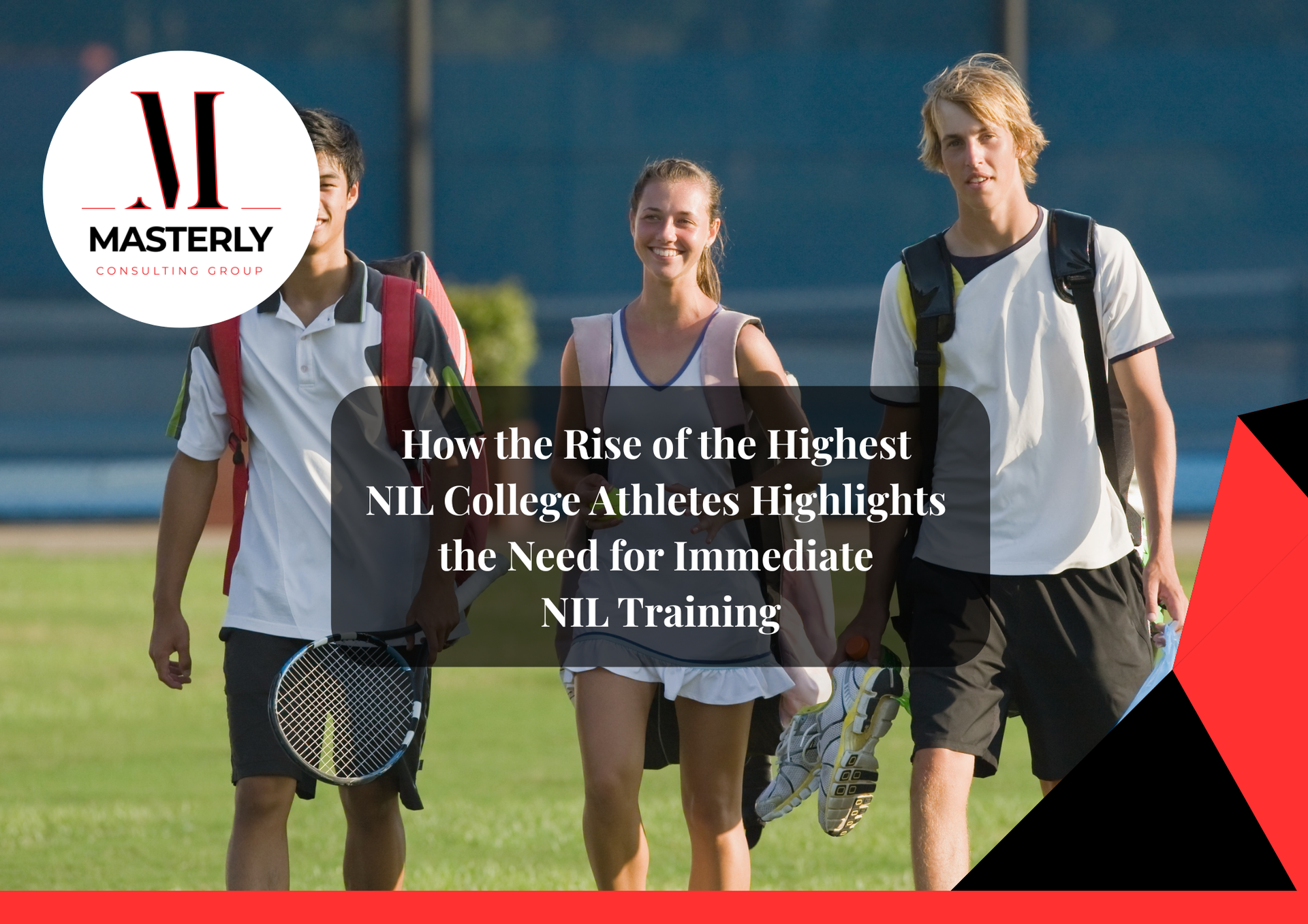Custom NIL Solutions for Universities and High Schools: Compliance and Education
The Rise of NIL in Amateur Sports
The introduction of name, image, and likeness (NIL) rights has transformed the landscape of college athletics and high school sports. Now, student athletes have the ability to profit from their personal brand while maintaining their amateur status. This change has brought opportunity, but also confusion, as institutions work to stay compliant with NCAA rules, state laws, and evolving federal legislation.
Schools must act quickly. A tailored NIL strategy is no longer a luxury—it is a requirement for programs hoping to remain competitive while supporting athletes at every level.
What NIL Refers To and Why It Matters
The right of student athletes to get payment for their name, likeness, and image is known as NIL. That includes money from:
- Social media posts
- Personal appearances
- Sponsorships
- Merchandising and branding
- Speaking engagements
As the current NIL market grows, college athletes, high school athletes, and even prospective student athletes need support navigating the rules that govern these earnings.
Understanding the NIL Landscape Across Institutions
The NIL landscape is complicated. With state NIL laws, school and conference requirements, and NCAA interim policy rules often overlapping or contradicting one another, schools can easily fall out of compliance.
Some member schools have implemented their own NIL rules, while others rely on broader NCAA guidelines or direction from their compliance office. Without a custom approach, even well-meaning programs risk violating NCAA rules related to NIL and damaging their athletes' eligibility.
Compliance Is Not Optional: It's Essential
For both universities and high schools, remaining compliant is critical. Programs must ensure they report NIL activities consistent with NCAA NIL rules and state laws. Failure to do so can result in sanctions, ineligibility, or reputational harm.
Smart compliance solutions should include:
- Regular updates on new rules and legislation
- Staff training on nil laws and policies
- Audits to track nil deals and agreements
This is especially important given recent legal shifts, including Supreme Court cases and pressure for federal legislation that would standardize NIL across the national level.
Why Educational Support Must Be Built Into Your NIL Policy
NIL isn't just about money—it's about knowledge. Educational materials are a vital part of any responsible NIL strategy. Current student athletes and college students must be taught how to handle:
- Contracts and negotiations
- Financial literacy and taxes
- Branding and social media accounts
- Risks of exploitation or misinformation
Programs that offer clear guidance not only meet compliance office standards, but also equip athletes to thrive both during and after their sports careers.
Tailored NIL Solutions for Every Level of Competition
No two schools are the same, and a particular school's NIL strategy should reflect its unique needs, resources, and athlete population. A custom NIL program should:
- Address likeness rules specific to the state and conference
- Include workshops for student athletes interested in NIL
- Create easy processes to report NIL activities consistent with policy
This approach supports athletes directly and helps ensure that likeness opportunities are both fair and sustainable.
Mitigating Risk Through Strategic Planning
Without proper planning, nil activities can open the door to compliance risks, contractual issues, and even class action lawsuit exposure. Schools need a proactive approach that anticipates challenges and limits risk.
A strategic NIL program should account for:
- Athlete eligibility rules
- Business ventures involving college athletes
- Relationships with professional services providers
Every NIL decision should be vetted for legal considerations and aligned with both school and conference requirements.
Bridging the Gap Between Athletics and Administration
One major hurdle in implementing NIL programs is disconnect between athletic programs and school administration. While college coaches may support NIL efforts, administrative staff often lack clarity on compliance, reporting, or oversight.
Bridging this gap requires:
- Internal NIL task forces
- Communication between compliance office and athletic staff
- Shared responsibility for policy execution
This collaborative structure ensures smoother implementation and stronger protection for current student athletes.
NIL Money and the Shift in Athlete Value
As nil money flows into college sports, the traditional value of student athletes is being redefined. In many cases, athletes are becoming influencers, entrepreneurs, and community figures.
Schools must evolve with this shift. Encouraging brand development and managing the ethical, educational, and legal considerations that come with name image likeness deals are now essential elements of student-athlete support.
The Role of State Laws and Legislative Uncertainty
The patchwork of state laws presents a significant challenge. While some states provide clear NIL guidelines, others are silent or contradictory. The push for federal legislation is strong, but still pending.
Until national standards are in place, member schools must interpret state NIL laws, draft localized policies, and anticipate changes. Schools need flexible solutions that adapt as legislation evolves.
Who Can Benefit From Custom NIL Solutions
Every educational institution with athletes can benefit. This includes:
- High schools developing NIL programs for the first time
- Universities refining their existing policies
- Athletic conferences seeking uniform compliance tools
A structured NIL framework provides clarity to athletes, staff, and administrators alike.
How to Support Athletes While Maintaining Control
Programs must walk a fine line: empowering athletes to explore nil opportunities, while also protecting them from poor decisions or violating NCAA rules related to branding and contracts.
Custom NIL solutions help strike that balance. When schools offer professional services provider access, legal resources, and branding education, they support athletes without losing oversight.
Ensuring Fairness for All Athletes
To maintain fairness, NIL programs should be inclusive. Whether working with male athletes, female athletes, or less publicized sports, schools must ensure that likeness opportunities are fairly distributed.
This includes providing tools and exposure opportunities to lesser-known athletes, helping them build a personal brand, and guiding them through the process.
NIL Education Isn’t a One-Time Session
A PowerPoint presentation at the start of the semester isn't enough. Effective NIL education must be continuous. That means:
- Monthly workshops
- Real-world case studies
- Guest speakers from college sports and the business world
Regular engagement ensures that student athletes are up to date with new rules, trends, and NCAA guidelines.
Protecting the School and the Athlete
A well-crafted NIL strategy protects both the institution and the individual. From managing social media posts to handling deals with professional services providers, schools must ensure all activities fall within approved nil guidelines.
Institutions that fail to provide structure risk public backlash, eligibility issues, and damage to their reputation.
Involving the Right Experts Early
NIL isn’t just a legal or athletic issue—it’s both. That’s why successful programs bring in:
- Legal professionals
- Branding consultants
- Compliance officers
- Industry experts on NIL implementation
Early collaboration builds a strong foundation that lasts beyond a single semester.
Building Sustainable NIL Infrastructure
Creating a custom NIL program is not a one-time task. Schools must invest in infrastructure that includes:
- Policy documentation and review
- Staff training and onboarding
- Annual assessments and updates
This infrastructure not only ensures compliance but also positions your school as a leader in name image likeness innovation.
Avoiding Common NIL Pitfalls
Many institutions stumble by taking a reactive approach. Common pitfalls include:
- Lack of communication between departments
- Failure to vet nil deals thoroughly
- Inconsistent enforcement of likeness policy
Avoiding these mistakes requires clarity, consistency, and a proactive stance on interim policy updates and enforcement.
Empowering Athletes Without Overcomplicating Policy
Some schools make NIL so complicated that student athletes are discouraged from participating. A better strategy is simplifying reporting, providing clear documentation, and offering responsive guidance.
This encourages participation while ensuring compliance.
What Success Looks Like in NIL Programs
Success isn’t measured just by the number of nil deals. It’s about:
- Athlete satisfaction and growth
- Policy adherence and clarity
- Transparent reporting and oversight
Ultimately, successful programs align athlete goals with institutional responsibility.
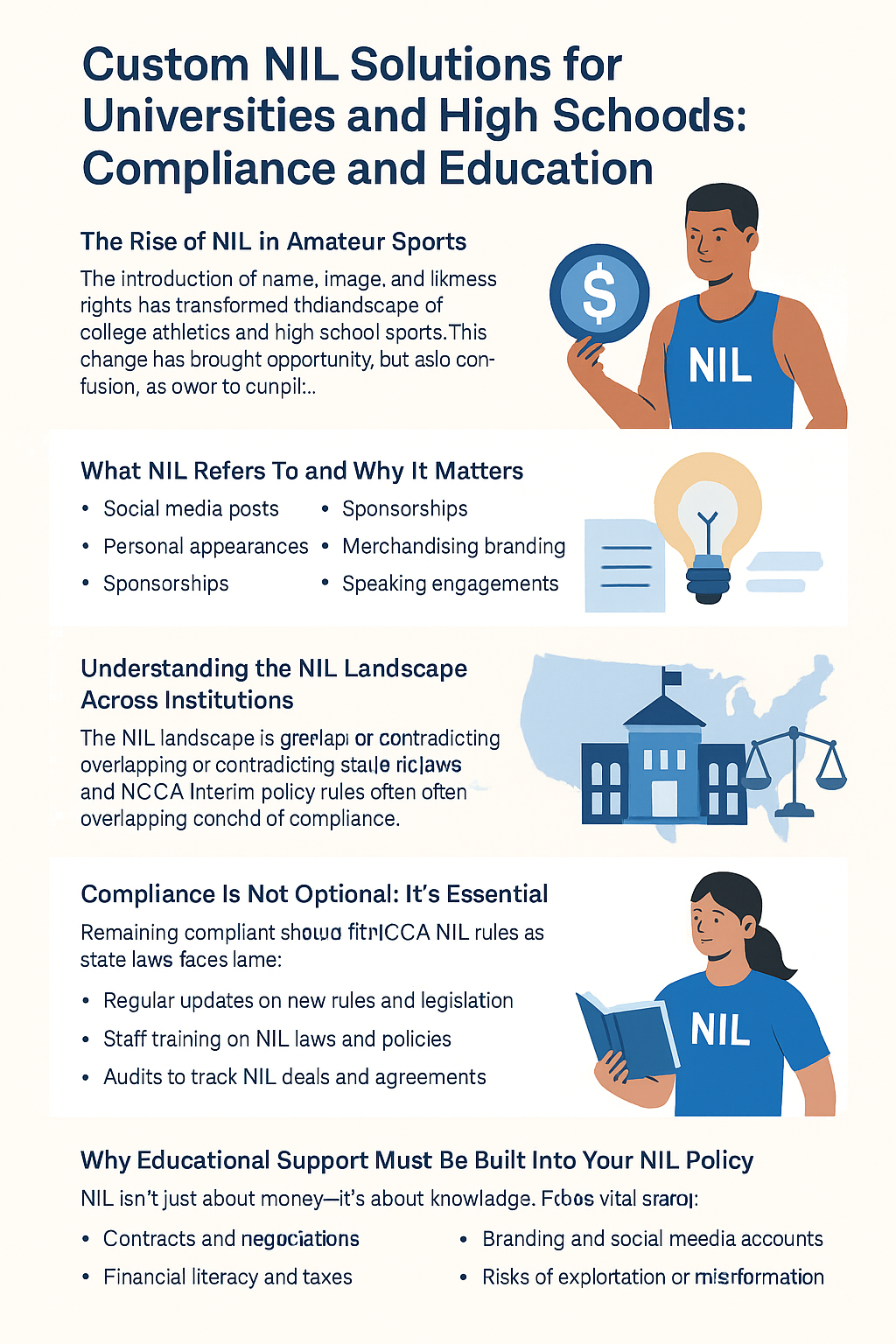
Navigating NIL Legislation and Evolving Leadership in Amateur Athletics
As NIL policies continue to evolve, comparisons between NCAA athletes and professional athletes have fueled national debate. Leaders such as NCAA President Charlie Baker and former NCAA President Mark Emmert have both expressed concern over inconsistencies in nil legislation and the lack of a unified federal standard. While the NCAA settled multiple legal challenges, including those related to education related benefits, many institutions still struggle to interpret such laws and implement policies that reflect a fair market approach.
Under the current NIL interim policy, schools must ensure their own athletes are supported, protected, and fairly compensated—without jeopardizing eligibility or violating compliance. Without proper guidance, institutions risk falling behind in a rapidly changing environment that demands clarity, structure, and proactive policy alignment.
Why High School Athletes Need Clear NIL Guidance Now
The conversation around name, image, and likeness isn’t limited to colleges—high school athletes are now entering the NIL arena in growing numbers. As more states adopt nil legislation that permits high school participation in nil activities, schools must be prepared to educate and support younger students and their families. Without proper oversight, these athletes face increased risk of signing unfair deals or violating eligibility rules.
Custom NIL programs tailored for high schools can provide essential resources, such as educational materials, legal reviews, and compliance checklists, ensuring that student-athletes start their NIL journey informed and protected from the start.
The Supreme Court's Influence on the NIL Era
The Supreme Court has played a pivotal role in shaping the current name, image, and likeness landscape, especially through its 2021 ruling in NCAA v. Alston. This landmark decision challenged the NCAA’s restrictions on education related benefits, signaling a shift toward greater rights and freedoms for student athletes. The ruling opened the door for further legal scrutiny of NIL policies and emphasized the need for institutions to align with fair and transparent compensation practices.
As legal pressure builds and new cases emerge, schools must stay informed about how future Supreme Court decisions may redefine the boundaries of nil legislation and institutional control. A proactive NIL strategy helps ensure compliance while empowering athletes within an evolving legal framework.
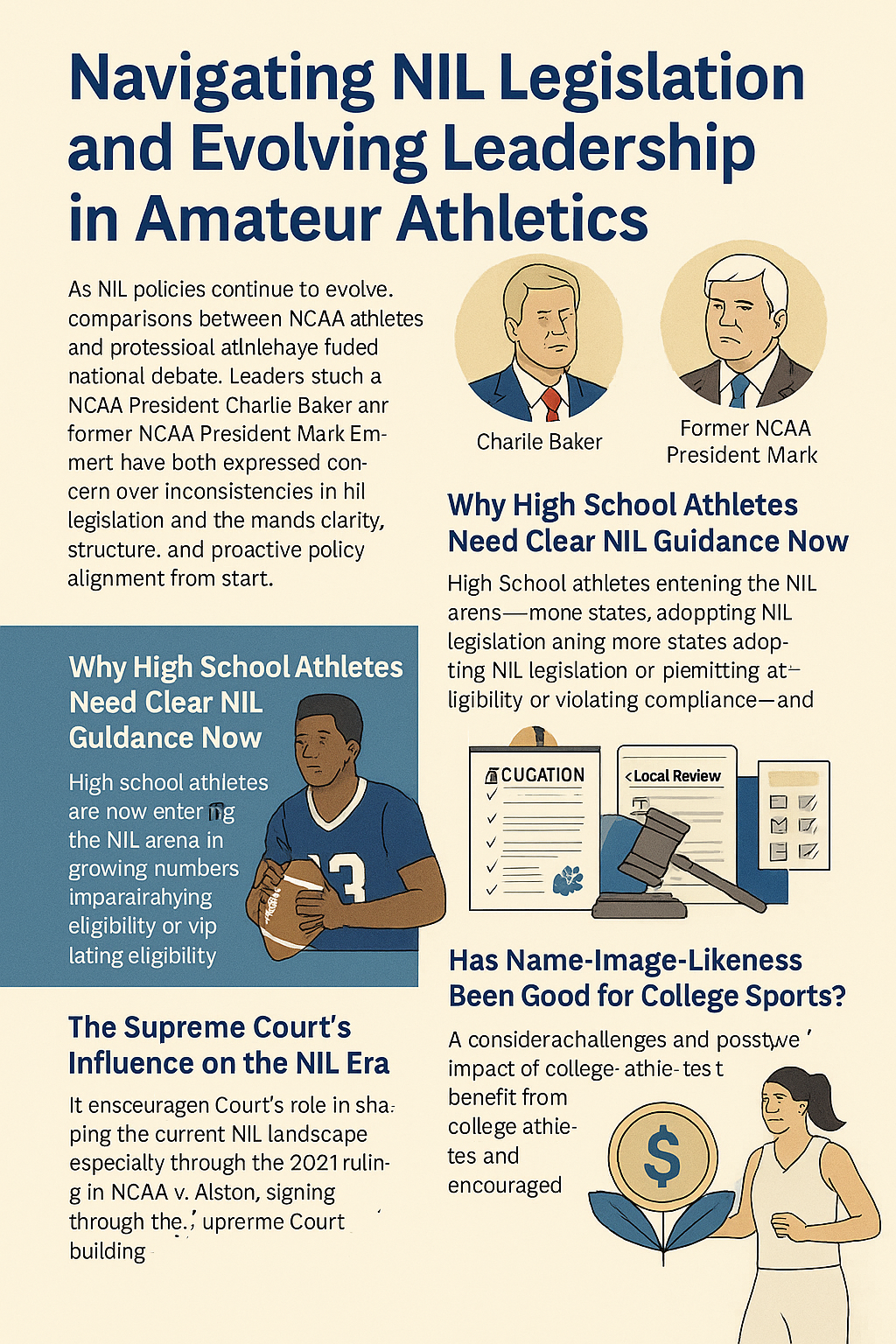
Has Name-Image-Likeness Been Good for College Sports?
A central question for administrators, parents, and coaches alike is this: has name-image-likeness been good for college sports? While the transition has presented compliance challenges, the overall impact has been positive. College athletes are now able to benefit from their hard work and visibility, gaining access to nil opportunities that were previously restricted under outdated interpretations of amateur status.
With the right guardrails in place, name image and likeness has encouraged greater transparency, empowered student athletes, and spurred institutions to provide better educational materials and support systems. For universities and high schools, this means adopting custom NIL solutions that promote both opportunity and accountability—ensuring the long-term health of athletics programs while safeguarding compliance.
Masterly Consulting Group Is Your Partner in NIL Compliance and Strategy
NIL is no longer optional—it’s a critical part of supporting today’s student-athletes and safeguarding your institution. At Masterly Consulting Group, we provide customized NIL solutions designed to help high schools and universities stay compliant, informed, and ahead of the curve.
From policy development and education to compliance frameworks and reporting systems, our team delivers hands-on support tailored to your school's unique needs.
Contact us at (888) 209-4055 to schedule your free consultation and take the next step in building a smarter, safer NIL program for your athletes.
